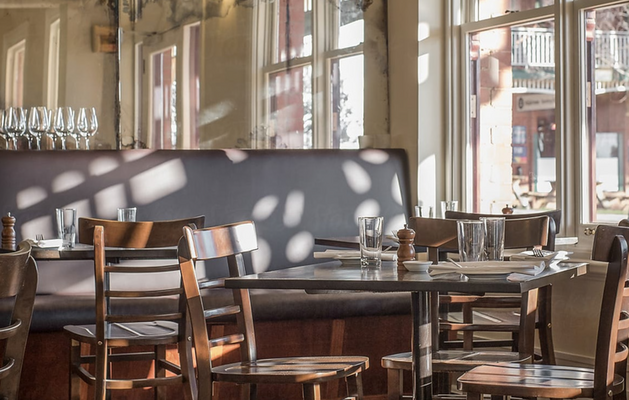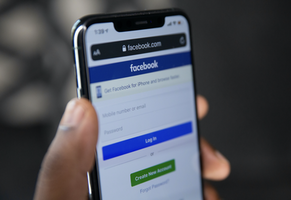
2021 was the start to a historic recovery for the restaurant industry, but there's still a long way to go.
Rising costs and labor shortages have introduced unpredictable disruptions to an industry already characterized by profit margins as low as 5–10 percent. And they’ve shown operators just how fine a line there is between turning a profit and closing shop forever.
The cost-cutting tactics that many operators are leveraging to fight back against rising costs, like reducing menu size or raising prices, don’t make enough of a dent to fully offset losses. They also risk a negative experience that can alienate even loyal customers.
The difficult truth is that even if operators are able to stabilize costs back to pre-pandemic levels, the best-case scenario is frequently a profit margin far lower and less stable than the averages seen in other industries.
“We’ve seen our costs increase significantly, but we want to do everything we can to avoid measures that hurt our customers, like increasing prices or lowering the quality of our menu and ingredients.” - Liz Benno, Owner of Bar Benno in New York City
What about delivery?
At the height of the COVID-19 pandemic, many operators—and the media—focused primarily on expanding delivery options as a possible way to compensate for lost profits. The reality, however, is that delivery and takeout average only 10-15% of sales for most restaurants.
How can you grow profit margins above 10% without hurting your guest experience?
In this paper, we’ll show you why your empty tables are the biggest hidden cost dragging your profits down, and why filling them can help you reach margins of 20% or more.
The hidden cost dragging restaurant profits down
Most operators ignore their biggest source of losses every night: the tables that sit empty.
 Restaurants depend on busy days to compensate for slower ones, and most operators accept the reality that slow days are impossible to prevent. But when busy days don’t adequately make up the difference, profits can quickly go into the red.
Restaurants depend on busy days to compensate for slower ones, and most operators accept the reality that slow days are impossible to prevent. But when busy days don’t adequately make up the difference, profits can quickly go into the red.
With costs rising, the fixed expenses that restaurants pay just to open their doors each day are putting an increasingly tighter squeeze on profit margins that were thin to begin with, meaning every empty seat is more expensive than ever before.
The economics of occupancy and profitability
Increasing occupancy during slower periods and driving a more consistent stream of customers is a clear and obvious solution, and is the only strategy that, when effectively executed, can lead to profit margins of 30% (or higher).

 Why does the industry accept the losses of empty tables?
Why does the industry accept the losses of empty tables?
It’s no industry secret that more butts in seats means more money—but actually attracting those guests at the right times is another matter entirely.
Popular reservations platforms don’t report on occupancy rate or the missed opportunities of empty tables, perpetuating the idea that occupancy is largely out of the operator’s hands.
“Operators know that if a table sits empty they are losing money,” says Utku Martin, General Manager of A La Turka in NYC. “But most operators struggle to visualize their empty seats and actually do something about filling them at specific times, since their current tools don’t give them an easy way to do this.”
Historically, operators have been limited to strategies that cast a wide net, like social media promotion, marketing emails, and broad specials like happy hours. These traditional strategies are limited in scope, though, and by targeting both new and existing customers, they fail to meaningfully address the empty tables that drag down margins on a daily basis.
What is Occupancy Management?
Rethinking your ability to control your own restaurant’s occupancy means that the profit losses of slow days are no longer a given. And in fact, filling an empty seat can have a more significant, measurable impact on your profit margins than tactics like cutting costs or unpredictable, broad-strokes marketing campaigns.
Other industries have prioritized occupancy control for decades—and in fact, have made it the principle by which they thrive. Airlines and hotels maximize occupancy by offering variable pricing based on demand, staving off the losses of fixed expenses by keeping their seats and their rooms filled as close to capacity as possible at all times.
Restaurants now have the opportunity to apply similar tactics to their own industry, and to use similar tools to optimize and automate the process.
So how can YOU fill your empty seats?
Action Plan to Grow Occupancy at Your Restaurant
“Reservation systems are great at managing existing customers, but to maximize overall occupancy, you need to be creative to fill the empty seats.” —Jacob Cohen, Partner @ Epicurean Group (NYC)
Operators who target their empty seats see a significant increase in profit margins, so how can you actually do it at your restaurant?
Capture guest data and market creatively to your existing customers to encourage visits during slow times
Capture All Guest Data
- Use QR codes, Point of Sale, and Reservations systems to collect emails for 100% of guests
- Aggregate and manage all guest emails in a simple marketing tool (e.g. Mailchimp)
Offer Time-Limited Menus
- Offer certain menu items or specials only during slow times
- Promote these on social media and email to encourage off-peak dining
Run “Always-On” Email Marketing
- Schedule ongoing emails every week to drive bookings on slower days
- Send special offers to your online ordering customers to get them to dine-in
Offer incentives to new and existing customers to drive incremental traffic to your slower times
Special Offers at Specific Times
- Send past customers discounts or gift cards for visiting again on specific days
- Send email offers for free drinks or menu items for guests who dine on slow days
Use an Occupancy Management Tool
- Use a tool like Seated to fill last-minute open seats without impacting operations
- Occupancy tools let you bring people in during slow times without discounting!
“Given our fixed labor costs, would I rather have that work generate $8k in sales, or $9k? Our mindset is to generate the highest sales we can given the labor volume, and tools that help us fill empty seats are critical to that.” — Eli Feldman, Owner of Shy Bird (Boston)
How Occupancy Management can Help You Grow Profits
Restaurants who are looking for a way to fill empty seats without managing time-intensive marketing campaigns can use an Occupancy Management tool that works with your existing systems.
Occupancy Management tools are a new way for operators to offer variable incentives to bring customers in when they have empty seats. These incentives are determined by when a customer dines, as well as how much they spend, encouraging them to order more during their visit.
For more strategies to grow restaurant occupancy, visit the Seated Blog.







